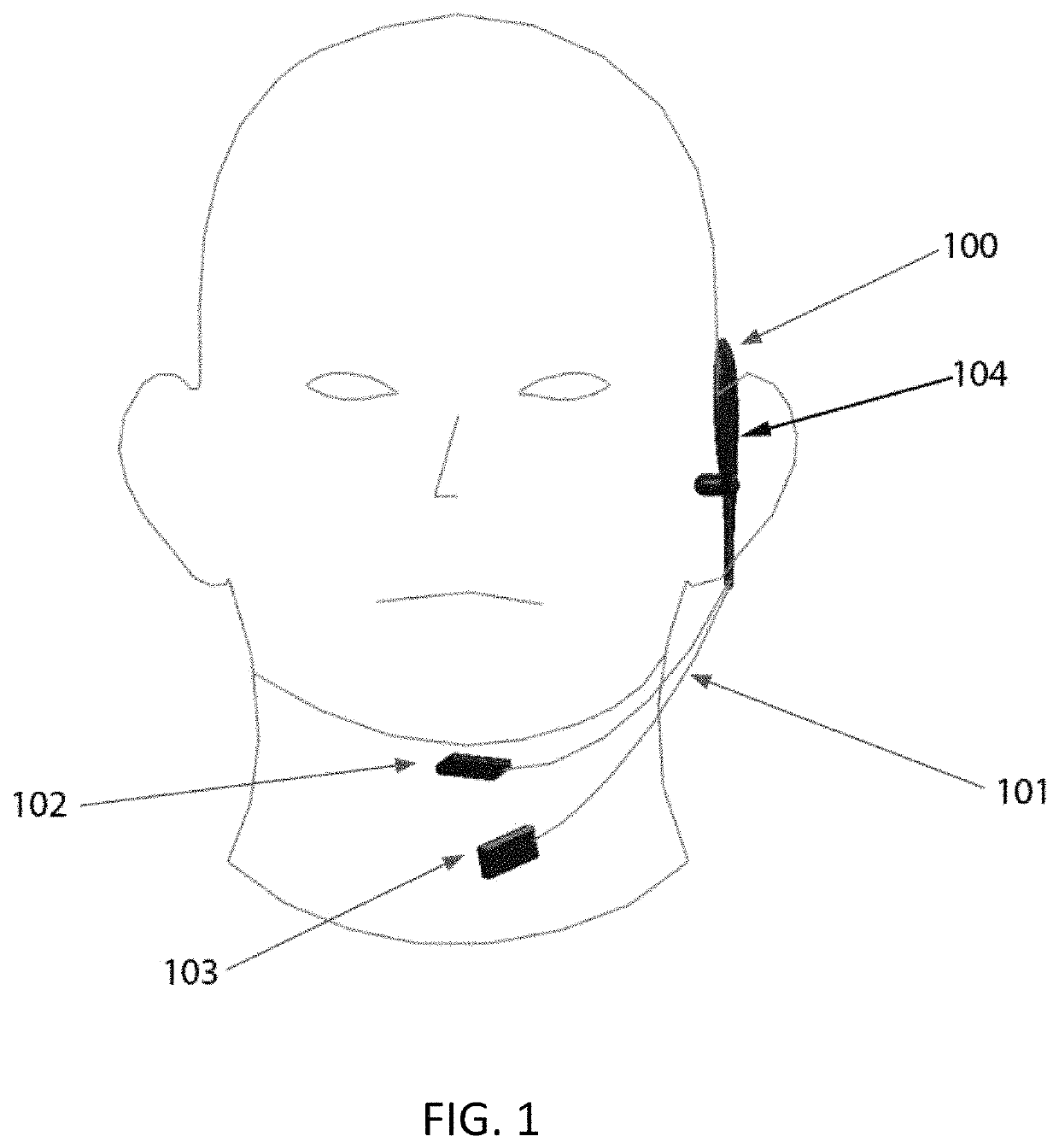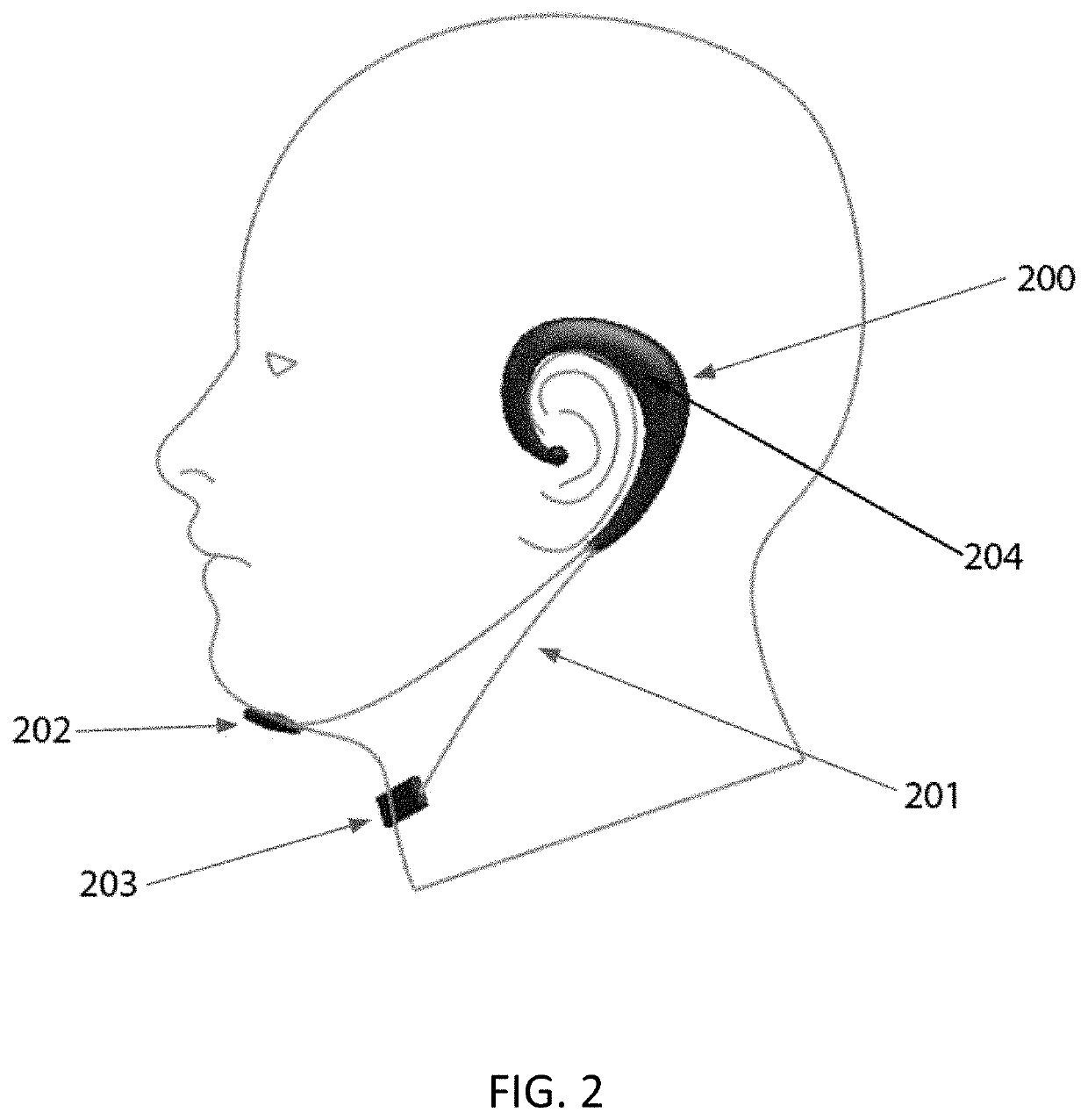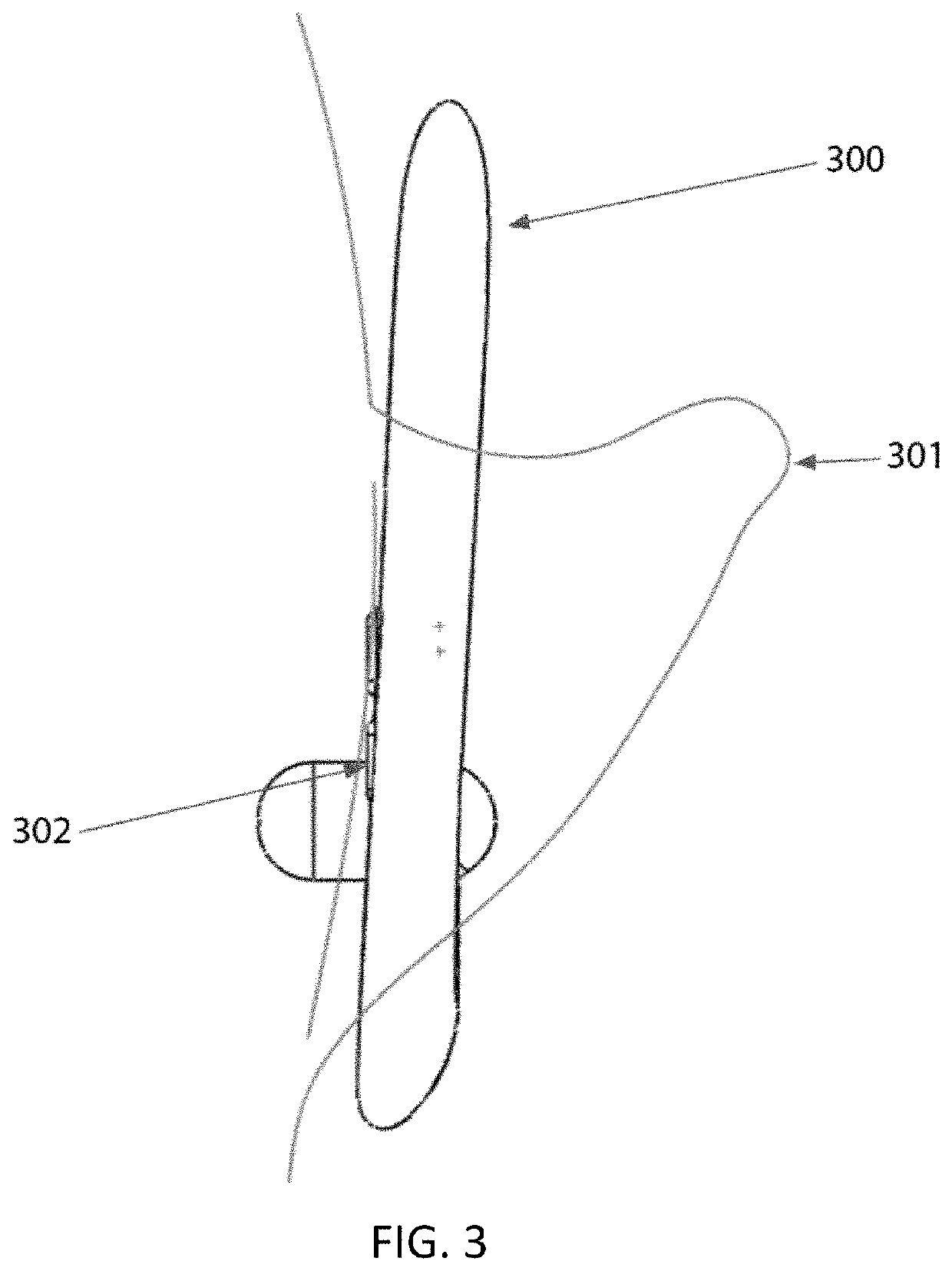Sub-vocal speech recognition apparatus and method
a speech recognition and subvocal technology, applied in speech analysis, speech recognition, instruments, etc., can solve the problems of loss of speech and sound formation ability, drawbacks of the electrolarynx, and the inability of people to create vibrations to use the electrolarynx
- Summary
- Abstract
- Description
- Claims
- Application Information
AI Technical Summary
Benefits of technology
Problems solved by technology
Method used
Image
Examples
Embodiment Construction
[0023]A sub-vocal speech recognition apparatus is shown in FIG. 1. The apparatus includes a headset that is worn over an ear with electromyography (EMG) electrode pairs in contact with a user's skin in a position near the neck and behind the ear, with an EMG pair plus IMU also under the chin. The EMG electrodes measure muscle electrical activity in response to a nerve's stimulation of the muscle.
[0024]FIG. 1 is a front view of the headset 100 constructed in accordance with one embodiment. The upper portion of the headset 100 sits over the user's ear in a conventional manner. The headset 100 can be worn over the ear with the bend and stay wires 101 extending out of the headset 100. The chin EMG electrode pair and IMU 102 can be positioned on a surface of the user's face under the user's chin. The neck EMG electrode pair 103 can be positioned on a surface of the user's neck, and an upper EMG pair can be placed on a surface of the user's head behind the ear 104. A housing for the chin ...
PUM
 Login to View More
Login to View More Abstract
Description
Claims
Application Information
 Login to View More
Login to View More - R&D
- Intellectual Property
- Life Sciences
- Materials
- Tech Scout
- Unparalleled Data Quality
- Higher Quality Content
- 60% Fewer Hallucinations
Browse by: Latest US Patents, China's latest patents, Technical Efficacy Thesaurus, Application Domain, Technology Topic, Popular Technical Reports.
© 2025 PatSnap. All rights reserved.Legal|Privacy policy|Modern Slavery Act Transparency Statement|Sitemap|About US| Contact US: help@patsnap.com



